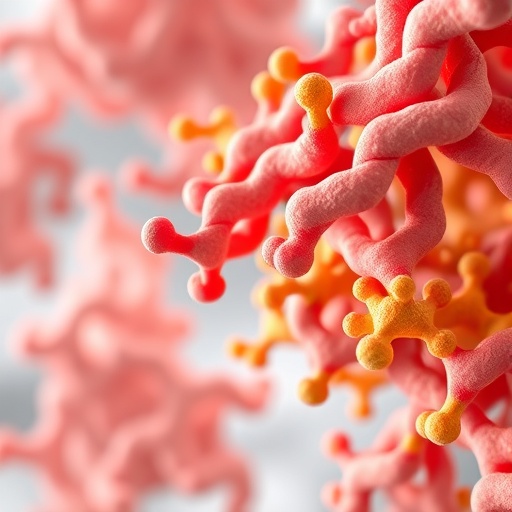In a groundbreaking development in the field of drug discovery, researchers have unveiled a novel approach utilizing a ligand-based convolutional neural network (CNN) aimed specifically at identifying P-glycoprotein (P-gp) ligands. This pioneering work may significantly alter the landscape of pharmaceutical development by streamlining the process of discovering potential drug candidates, particularly those targeting the increasingly vital P-glycoprotein transporter.
P-glycoprotein, an essential membrane protein found in various tissues, plays a critical role in drug metabolism and transport. It acts as a gatekeeper, influencing the absorption and distribution of many drugs within the body. The ability to efficiently predict which compounds can effectively interact with P-glycoprotein is a key component in designing new medications, especially for conditions requiring blood-brain barrier penetration where P-gp can limit therapeutic effectiveness.
The innovative CNN model proposed by Neela and Peram stands out in its ability to analyze and predict the binding efficacy of small molecules to P-glycoprotein. Traditional drug discovery methods often involve labor-intensive processes, including high-throughput screening and elaborate computational simulations. In contrast, the CNN approach leverages advanced machine learning algorithms to provide rapid and accurate predictions, thus reducing the time and cost associated with drug development.
What sets this research apart is the integration of ligand-based predictive modeling with the power of deep learning. Ligand-based approaches typically rely on chemical features and known interactions to generate predictive insights. By employing a convolutional neural network, the authors could harness large datasets of known P-glycoprotein ligands to train their model, enhancing the algorithm’s ability to generalize from existing data and identify novel compounds that may have eluded traditional methods.
The results of the study showcase a marked improvement in predictive accuracy over existing methodologies, emphasizing the potential of machine learning to reshape drug discovery paradigms. In the context of personalized medicine and the increasing demand for targeted therapies, such advancements in computational techniques are crucial.
Throughout the research, Neela and Peram encountered both challenges and opportunities inherent in the application of CNNs to molecular data. One of the primary obstacles lay in the need for extensive, high-quality datasets to train the model effectively. The authors tackled this issue by curating a comprehensive library of P-glycoprotein ligand interactions, integrating data from various sources to ensure robustness in their findings.
They also addressed the interpretability of the CNN’s predictions. One of the common criticisms of machine learning models is their often inscrutable nature; understanding the rationale behind a prediction can be as crucial as the prediction itself. The authors incorporated techniques to visualize how the model made its decisions, aiding researchers in gleaning insights about molecular interactions at a deeper level.
Moreover, the implications of this research stretch beyond the lab. With the pharmaceutical industry increasingly focused on sustainable and efficient drug discovery processes, methods like the one proposed could hold the key to breaking costly bottlenecks. As the model matures, it may be adapted for other targets beyond P-glycoprotein, showcasing its versatility in the broader realm of biopharmaceutical applications.
The authors emphasized the necessity for collaboration between computer scientists and pharmacologists to refine CNN applications further. By fostering interdisciplinary partnerships, the integration of deep learning into drug discovery could lead to unexpected breakthroughs, driving innovation across various therapeutic areas.
As Pharmaceutical companies continue to grapple with the challenges of drug resistance and complex disease mechanisms, studies like this will be instrumental in developing more effective therapeutics. For instance, understanding how to bypass P-glycoprotein efflux mechanisms may allow for the design of drugs that can treat conditions such as cancer or neurological disorders more effectively.
This research opens up new pathways not just for identifying existing ligands but also for guiding the design of new molecular entities optimized for specific therapies. The need for better selection methods in early drug discovery has never been more pressing, making the findings from Neela and Peram both timely and critical.
In conclusion, the exploration of ligand-based convolutional neural networks for identifying P-glycoprotein ligands represents a significant advance in the intersection of artificial intelligence and pharmacology. As a tool, it promises to revolutionize how drugs are developed and assessed, potentially ushering in an era of more efficient, targeted, and personalized therapeutic options.
The publication’s potential to spark interest among researchers and industry experts underscores its relevance, with potential ramifications that could extend well into the future of drug development. As the scientific community continues to embrace innovative methodologies, the integration of AI technologies in medicinal chemistry will undoubtedly become a cornerstone of modern pharmacological research.
Thus far, the promising implications of this study suggest that as machine learning technology evolves, so too will our understanding and capabilities within the pharmaceutical landscape, further transforming how we approach disease treatment and management.
Subject of Research: Identification of P-glycoprotein ligands using a convolutional neural network in drug discovery.
Article Title: Correction: A novel ligand-based convolutional neural network for identification of P-glycoprotein ligands in drug discovery.
Article References: Neela, M.M.V.A., Peram, S. Correction: A novel ligand-based convolutional neural network for identification of P-glycoprotein ligands in drug discovery. Mol Divers (2025). https://doi.org/10.1007/s11030-025-11331-2
Image Credits: AI Generated
DOI:
Keywords: Convolutional neural network, P-glycoprotein, drug discovery, machine learning, ligands, pharmacology, artificial intelligence, personalized medicine.




